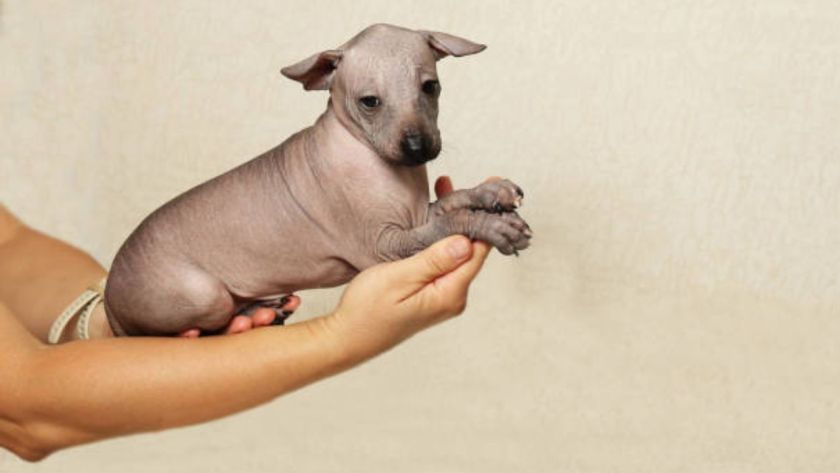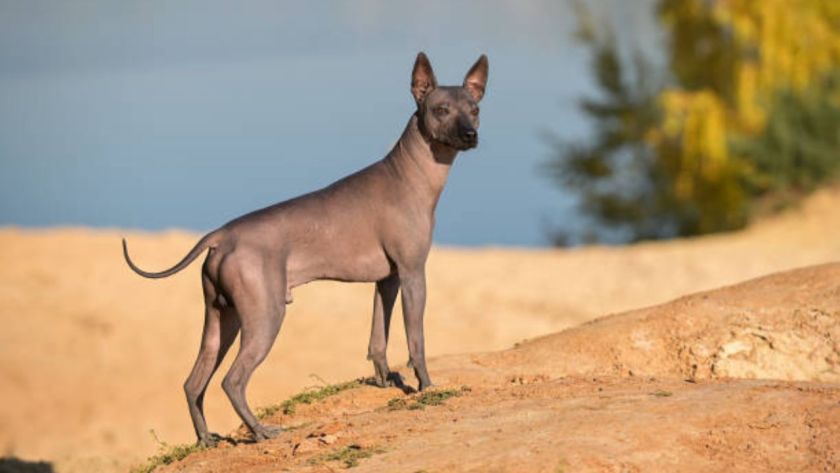The Xoloitzcuintli (pronounced show-low-eats-QUEENT-lee), often called the “Xolo” for short, is one of the world’s oldest and rarest dog breeds. Originating in ancient Mexico, this unique breed has a history that dates back over 3,000 years. The name “Xoloitzcuintli” comes from the Aztec god “Xolotl” and “itzcuintli,” the Nahuatl word for dog. These dogs were considered sacred by several ancient civilizations including the Aztecs, Toltecs, and Maya, and were believed to have healing and spiritual powers. Known for their striking appearance—often hairless, though coated varieties also exist—Xolos come in three sizes: toy, miniature, and standard. Despite their rare appearance, they are known for being loyal, intelligent, and affectionate companions.
History and Origins
The Xoloitzcuintli is deeply woven into the fabric of Mesoamerican history. Archaeological evidence of these dogs has been found in ancient tombs and ruins throughout Central and South America. Ancient civilizations believed the Xolo was a spiritual guide, meant to help the soul navigate the underworld after death. Spanish explorers in the 16th century documented encounters with these unusual hairless dogs, but the breed almost went extinct during colonial times due to cultural changes. Thankfully, indigenous communities continued to preserve the breed. In the 20th century, efforts by dog lovers and historians helped to revive and protect the Xolo. Today, they are a symbol of Mexican heritage and were named the national dog of Mexico in 1956.
Alos read: What is a Zuchon Dog Breed?

Physical Appearance
Xoloitzcuintlis are instantly recognizable due to their hairless bodies, though some coated variants exist. Their skin is usually dark—shades of black, gray, slate, or bronze—but they can also be light-colored. The skin is smooth, tough, and warm to the touch, often described as feeling like suede. Their eyes are almond-shaped and expressive, usually dark in color, and their ears stand upright, adding to their alert and noble look. The breed is known for its athletic, muscular body and graceful movement. Sizes vary: Toy (10–14 inches), Miniature (14–18 inches), and Standard (18–23 inches). The hairless variety requires skincare, like sunscreen or moisturizers, while the coated type has short, flat hair that’s easy to manage.
Temperament and Behavior
Xoloitzcuintlis are known for their calm, loyal, and intelligent temperament. They form deep bonds with their families and are often described as “Velcro dogs” due to their affectionate nature. They are alert and cautious with strangers, making them excellent watchdogs. While they are not aggressive, they can be territorial and protective. Xolos are intelligent and respond well to positive training methods, though they can sometimes be stubborn. They do well in both apartments and houses, as long as they get enough mental and physical stimulation. Despite their ancient roots, Xolos adapt well to modern life and enjoy being part of the family—whether it’s going for a walk, playing with kids, or simply cuddling on the couch.

Health and Lifespan Considerations
The Xoloitzcuintli is generally a healthy and hardy breed. One of the benefits of being a naturally evolved breed is that they suffer from fewer genetic disorders compared to more heavily bred dogs. Common health concerns include skin issues, especially for the hairless type, which may be prone to sunburn or acne. Regular skincare routines can prevent these problems. Dental health is also important, as hairless Xolos often have missing or irregular teeth. With proper care, a Xolo can live between 13 and 18 years, which is longer than many other breeds. Regular vet check-ups, a balanced diet, and exercise will help maintain their well-being throughout their life.
Care and Maintenance
Taking care of a Xoloitzcuintli requires some specific routines, especially for the hairless type. Their skin must be protected from sun exposure using dog-safe sunscreen, and in colder climates, they may need sweaters to stay warm. Bathing should be done every few weeks to keep their skin clean and prevent oil buildup. Avoid using harsh soaps, as their skin is sensitive. Dental care is crucial, especially for the hairless variety. Their nails grow quickly and should be trimmed regularly. They don’t shed, which makes them ideal for people with allergies. Their low odor and minimal grooming needs are added advantages. Despite their unusual appearance, they are generally low-maintenance dogs when cared for properly.
Training and Exercise Needs
Training a Xoloitzcuintli is a rewarding experience due to their high intelligence and eagerness to learn. They respond best to positive reinforcement methods, including praise, treats, and consistency. Harsh training techniques should be avoided as Xolos are sensitive and may withdraw or become fearful. Early puppy training classes and social exposure are ideal to build their confidence and social skills.
In terms of exercise, they are moderately active and enjoy daily walks, interactive play, and occasional agility or obedience work. Despite their elegant appearance, Xolos are athletic and agile, capable of quick sprints and even climbing. However, they also enjoy lounging and will happily curl up next to their favorite human for hours. A balanced routine keeps them mentally and physically fit.

Role in Modern Culture
In recent years, the Xoloitzcuintli has seen a rise in global recognition. They gained mainstream attention when the Disney-Pixar film Coco featured a Xolo named Dante, portraying the breed as a loyal spirit guide—true to its historical significance. The breed has also appeared in art and fashion, notably favored by Mexican artist Frida Kahlo and her husband Diego Rivera, both of whom had Xolos and often featured them in their works. The breed symbolizes Mexican identity and heritage. In dog shows, they are now more frequently seen and are recognized by major kennel clubs worldwide. This ancient breed continues to evolve, balancing its rich past with a vibrant, modern presence.
Caring for a Xoloitzcuintli at Home
Caring for a Xoloitzcuintli goes beyond feeding and walking. Because of their hairless skin, owners must be diligent with skin care, including applying moisturizers and dog-safe sunscreen. Avoid using human products, as they may cause irritation. Xolos are indoor dogs and should not be left outside for extended periods, especially in extreme weather. In winter, they need sweaters or dog jackets to stay warm.
A soft bed, access to shade, and clean water are essentials for daily comfort. Nutrition is important too—choose high-quality dog food suited to their age and activity level. They also need mental stimulation, so puzzle toys, training games, and gentle play are beneficial. With the right care, a Xolo becomes not just a pet but a wise, loyal family member.
Conclusion: Why the Xoloitzcuintli Matters
The Xoloitzcuintli is much more than a hairless dog—it is a living piece of history. Revered by ancient civilizations, nearly lost to time, and now reborn as a symbol of national pride, this breed captures the imagination with its unique appearance and soulful eyes. It offers companionship, loyalty, and a rich cultural legacy. Whether you’re drawn to their spiritual significance, low-maintenance lifestyle, or deep connection to Mexican history, a Xolo is unlike any other dog. They teach us about resilience, heritage, and the unbreakable bond between humans and animals. Owning a Xoloitzcuintli isn’t just about having a pet—it’s about preserving a legacy that spans thousands of years.

